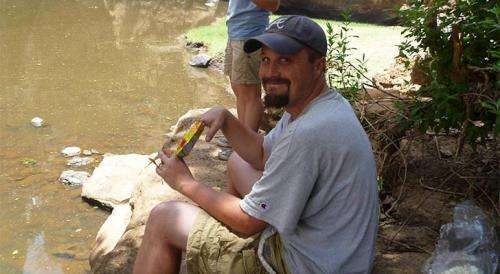Are animal traits the result of behavioral epigenetics?

A plant that is unremarkable in one environment becomes an invasive species in another, pushing through house foundations and sprouting up through roads. A house sparrow that's a perfectly charming resident of the English countryside is transported around the world, where it wipes out other bird species with aggressive behavior and harbored diseases.
It sounds like these plants and animals might be the result of mutant DNA – but they're not. They have the same DNA they had in their native land; it's the expression of their genes that's been radically changed.
Scientists call this phenomenon epigenetics – the turning up, down or off of gene expression, which influences the traits plants and animals take on. Now, University of South Florida researchers Christina Richards and Lynn Martin, both professors in the Department of Integrative Biology, have published a new guide in the journal Behavioral Ecology on how scientists can understand how epigenetics guides rapid adaptation.
"Our definition of epigenetics refers to molecular mechanisms that modulate how DNA is translated into traits," Richards said.
"If you have two individuals with the same DNA sequence, you can get differences in their traits just by regulating what portions of the DNA sequence are turned on and off. When you expand this up to the population level, you begin to appreciate how fast variation can arise from environmental changes. New variation does not only come from mutation. Mutations are rare and slow to affect populations."
The Behavioral Ecology paper, "Behavioral Epigenetics for Ecologists", lays out a roadmap to determine if important animal traits are the result of epigenetics. Martin said epigenetic research could help scientist's understanding of diverse issues such as the current obesity pandemic, cancer rates or how species may react to global climate change.
With epigenetic change, the DNA sequence stays the same and alterations in behavior, health, size, and all sorts of factors happen just because DNA gets packaged differently. In many cases, epigenetic changes like this are activated by some change in the environment; typically something stressful. What's unique about some of these environmentally-induced changes is that they can be passed along to subsequent generations, changing the nature of the species.
Until recently, the inheritance of acquired traits was not thought to be important to evolutionary processes. DNA mutants arise and a tiny fraction of them pass on to the next generation to help populations adjust to new conditions. This way of thinking about evolution may address only part of the picture though; if epigenetic changes are as common as some expect, the understanding of problems as diverse as human diseases to how to control the invasive Burmese Pythons currently infiltrating the Florida Everglades might require whole new perspectives, the scientists said.
One of the main areas where thinking about epigenetic change is so important is invasive species. Scientists have long been interested in understanding why some plants and animals are so successful at causing problems outside their native ranges. A likely answer involves epigenetic change. Richards and Martin, along with North Carolina State University co-author Cris Ledón-Rettig, describe their recent study as an "ambitious" attempt to find new understanding of how animal and plant species change – and what implications there may be for life in a changing environment.
"The current biological theory holds that differences in DNA provide the variation necessary for adjusting to a wide variety of environmental factors," Richards said. "But invasive species appear to thrive even with low levels of genetic variation."
For example, in a recent study of Japanese knotweed (Fallopia japonica) in Ecology Letters, Richards and colleagues found plants across the 100 miles of Long Island, N.Y., had almost no genetic variation. Instead, responses to new habitats such as sand dunes and marshes were correlated with variation in DNA methylation patterns, one of the ways gene expression is regulated. Her findings indicate that epigenetic effects could be responsible for how the plants manage to thrive in diverse habitats, even though they have basically the same DNA.
Martin is studying how the house sparrow can adjust so quickly to novel conditions in Africa. His group is finding that over only 60 years or so, house sparrows have spread across Kenya, changing dramatically as they've moved into new areas. The species originally comes from Europe, but in Kenya and perhaps elsewhere they've been introduced, they fight parasites differently, respond to stress differently, and are much more exploratory. With environments being so different and with so little genetic variation to work with, it's very likely that epigenetics is helping this invader expand its range.
"We used to think that the environment mostly acted as the major selective agent for successful or unsuccessful trait adaptations - but where novel variation came from was always hard to pinpoint," Martin said. "This new way of thinking about evolution – adding epigenetics – gives the environment two roles: environment still picks the individuals that get to breed successfully, but it also creates trait variation through gene expression and probably epigenetic change. In effect, change can show up faster than the traditional view of evolution."
More information: beheco.oxfordjournals.org/cont … 1/beheco.ars145.full
Journal information: Behavioral Ecology , Ecology Letters
Provided by University of South Florida

















